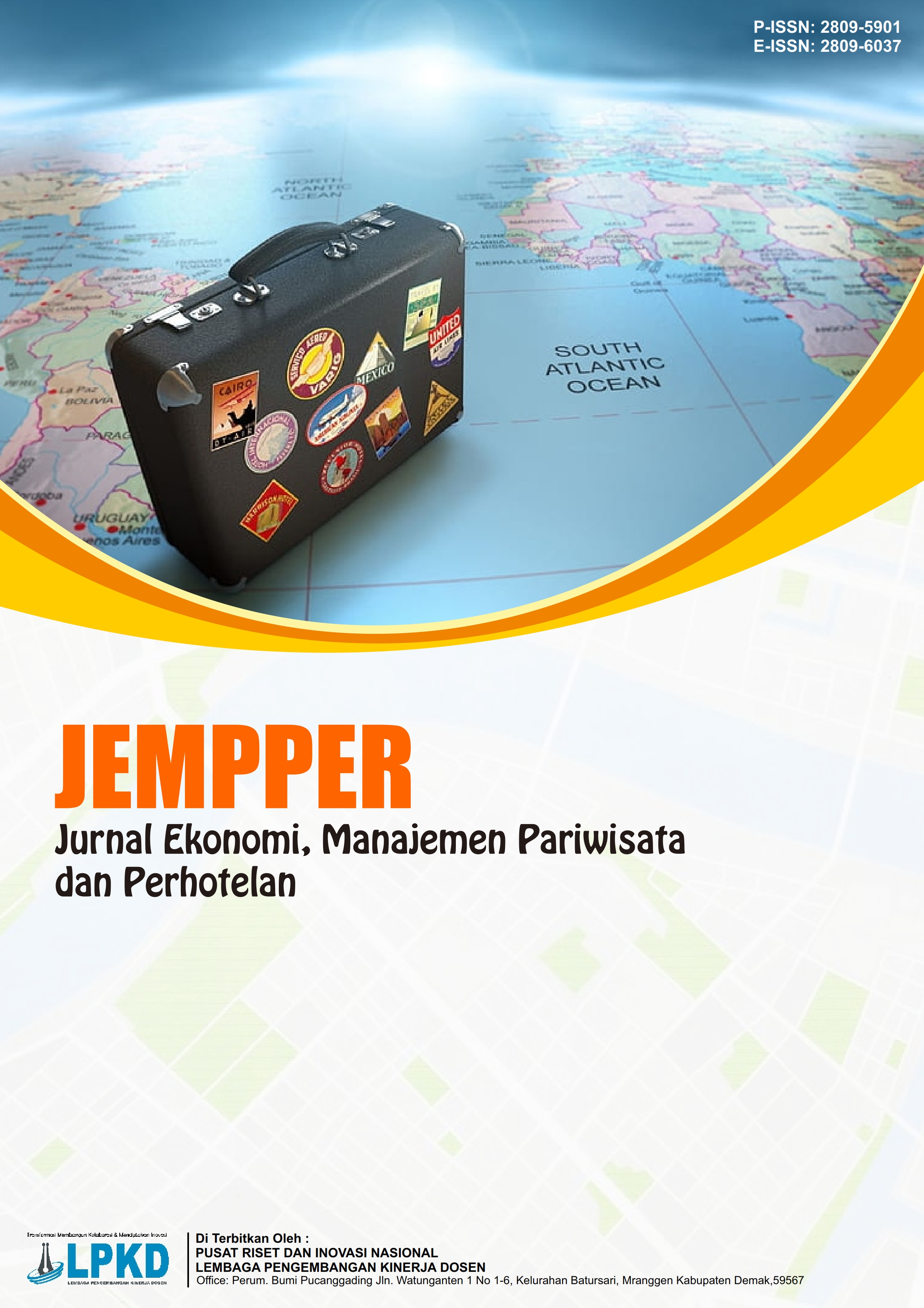Strategi Visualisasi dan Narasi Digital dalam Promosi Wisata Edukasi di Indonesia: Analisis Konten Instagram Bertagar #wisataedukasi
DOI:
https://doi.org/10.55606/jempper.v4i3.5114Keywords:
Digital narrative, Digital visualization, Educational tourism, Family engagement, InstagramAbstract
This article discusses the visual and narrative strategies used in promoting educational tourism for children in Indonesia through Instagram posts with the hashtag #wisataedukasi. The research adopts a qualitative approach with content analysis of both visual and narrative aspects of digital posts showcasing educational tourist destinations suitable for families. The aim of the study is to understand how visual and narrative elements work together to shape the audience's perception of educational tourism destinations. The findings show that the visual content in the Instagram posts is dominated by the use of bright colors, cheerful expressions of children, and participatory educational activities. These activities involve direct interaction with nature or animals, such as feeding animals or conducting simple experiments, designed to create a fun learning experience for children. Narratively, captions tend to use casual and consultative language, with word choices emphasizing excitement, togetherness, and the educational benefits that can be gained from visiting these destinations. The representation of the complete family in the content plays an important role in building the image of educational tourism as a space that supports quality family time. Additionally, the use of relevant and popular hashtags strengthens the association of educational tourism destinations with modern parenting, which emphasizes learning while playing. This visual and narrative strategy has been proven effective in building emotional engagement with the audience and creating a positive perception of educational destinations. Overall, this article concludes that social media, particularly Instagram, plays a significant role in shaping the branding of educational tourism. It is therefore recommended to continue strengthening visual and narrative content strategies tailored to the preferences of young families as the primary target for promoting children's educational tourism.
References
Ballantyne, R., & Packer, J. (2002). Nature-based excursions: School students' perceptions of learning in natural environments. International Research in Geographical and Environmental Education, 11(3), 218-236. https://doi.org/10.1080/10382040208667488
Braun, V., & Clarke, V. (2006). Using thematic analysis in psychology. Qualitative Research in Psychology, 3(2), 77-101. https://doi.org/10.1191/1478088706qp063oa
Denzin, N. K., & Lincoln, Y. S. (2018). The SAGE handbook of qualitative research (5th ed.). SAGE.
Dewey, J. (1938). Experience and education. New York: Macmillan.
DeWitt, J., & Storksdieck, M. (2008). A short review of school field trips: Key findings from the past and implications for the future. Visitor Studies, 11(2), 181-197. https://doi.org/10.1080/10645570802355562
Falk, J. H., & Dierking, L. D. (2016). The museum experience revisited. Routledge. https://doi.org/10.4324/9781315417851
Highfield, T., & Leaver, T. (2016). Instagrammatics and digital methods: Studying visual social media, from selfies and GIFs to memes and emoji. Communication Research and Practice, 2(1), 47-62. https://doi.org/10.1080/22041451.2016.1155332
Huang, J., Singh, P. V., & Ghose, A. (2013). A structural model of employee behavioral dynamics in enterprise social media. Management Science, 61(12), 2825-2844. https://doi.org/10.1287/mnsc.2014.2052
Jenkins, H., Purushotma, R., Weigel, M., Clinton, K., & Robison, A. J. (2009). Confronting the challenges of participatory culture: Media education for the 21st century. MIT Press. https://doi.org/10.7551/mitpress/8435.001.0001
Khamis, S., Ang, L., & Welling, R. (2017). Self-branding, 'micro-celebrity' and the rise of social media influencers. Celebrity Studies, 8(2), 191-208. https://doi.org/10.1080/19392397.2016.1218292
Kress, G., & van Leeuwen, T. (2006). Reading images: The grammar of visual design (2nd ed.). Routledge. https://doi.org/10.4324/9780203619728
Labrecque, L. I., & Milne, G. R. (2012). Exciting red and competent blue: The importance of color in marketing. Journal of the Academy of Marketing Science, 40(5), 711-727. https://doi.org/10.1007/s11747-010-0245-y
Mariani, M. M., Di Felice, M., & Mura, M. (2016). Facebook as a destination marketing tool: Evidence from Italian regional destination management organizations. Tourism Management, 54, 321-343. https://doi.org/10.1016/j.tourman.2015.12.008
Moscardo, G. (1996). Mindful visitors: Heritage and tourism. Annals of Tourism Research, 23(2), 376-397. https://doi.org/10.1016/0160-7383(95)00068-2
Page, R. (2012). The linguistics of self-branding and micro-celebrity in Twitter: The role of hashtags. Discourse & Communication, 6(2), 181-201. https://doi.org/10.1177/1750481312437441
Poria, Y., Reichel, A., & Biran, A. (2006). Heritage site perceptions and motivations to visit. Journal of Travel Research, 44(3), 318-326. https://doi.org/10.1177/0047287505279004
Rose, G. (2016). Visual methodologies: An introduction to researching with visual materials (4th ed.). SAGE.
Ryan, M.-L. (2004). Narrative across media: The languages of storytelling. U of Nebraska Press.
Shaw, S. M. (2008). Family leisure and changing ideologies of parenthood. Sociology Compass, 2(2), 688-703. https://doi.org/10.1111/j.1751-9020.2007.00088.x
Townsend, L., & Wallace, C. (2016). Social media research: A guide to ethics. University of Aberdeen and the Economic and Social Research Council (ESRC).
Xiang, Z., & Gretzel, U. (2010). Role of social media in online travel information search. Tourism Management, 31(2), 179-188. https://doi.org/10.1016/j.tourman.2009.02.016







